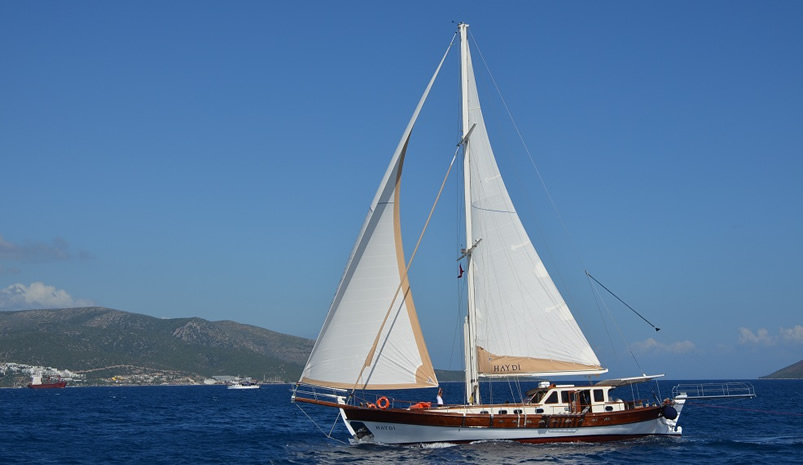
A Legend of the Mediterranean
As many legends having an untraceable history that mysteriously refuses to tell us when and where it all began, Tirhandil may be the birth of a legendary cruising for thousands of years, created by an unidentified author in an unknown region until now. Tirhandil, the Mediterranean belle, may be thousands years old and the oldest among all of the beauties of the sea. “It is the boat which is full of Tirhandil from Gibraltar to Lebanon with the specific character of Mediterranean Sea,” Yucel Koyagasioglu says.
It is a fact that anyone that sees an original Tirhandil gets the feeling of traveling to the ancient city of Ephesus. With the puffiness of its chest, the round spaciousness of its body and especially its curvy head that brings inspiration from Homer’s era and takes you back to those ages, this vessel is exactly a sea belle.
For many centuries, there was not a single master of the craft in any civilization that dared to contribute to its design, touch Tirhandil’s lines as all seaports in the Mediterranean. Then, the Aegean that met Tirhandil accepted its beauty. This may be the reason for why Tirhandils could be seen in all the countries of the Mediterranean.
In short, Tirhandil is a fruit of the Mediterranean civilization; it is not particular to anyone, but for everyone. It is totally mutual as the sun, the orange and the blue of the Mediterranean. It anchors in all sea ports, swims in all bays, and may be seen as a wonder of the Mediterranean. As any place in the Mediterranean, Tirhandil belongs to our seacoasts too with its almighty sailors.
“We let out our topsails. Sails have bloated like our chests. The wind was so strong. Poles leaned through to front. The water on epaulettes was shining like twin waterfalls. The great Tirhandil was bending to water like a bird drinking driblets, and then she leaned her back to the sea. She was going through to the sky dripping water from its bow.”
Tirhandil, with its two heads in one, has a sternpost that looks like a crescent and has a wide and round body, open decker, low and curvy board, single pole and a Latin sail, a traditional Mediterranean vessel. In Greek, its name is ‘Trikandini’ which means that the width is one-third of its length. Her short spine merges with half crescent shaped sternposts. It dependently increases her ability of maneuver and makes it easy to turn quickly if put the tiller on the starboard.
The Vessel Hard to sink
According to research, Tirhandil vessels were made at least a century ago in the Aegean Sea coast of Anatolia. It has a round structure with its shape of sternpost and bow sections of spin.






